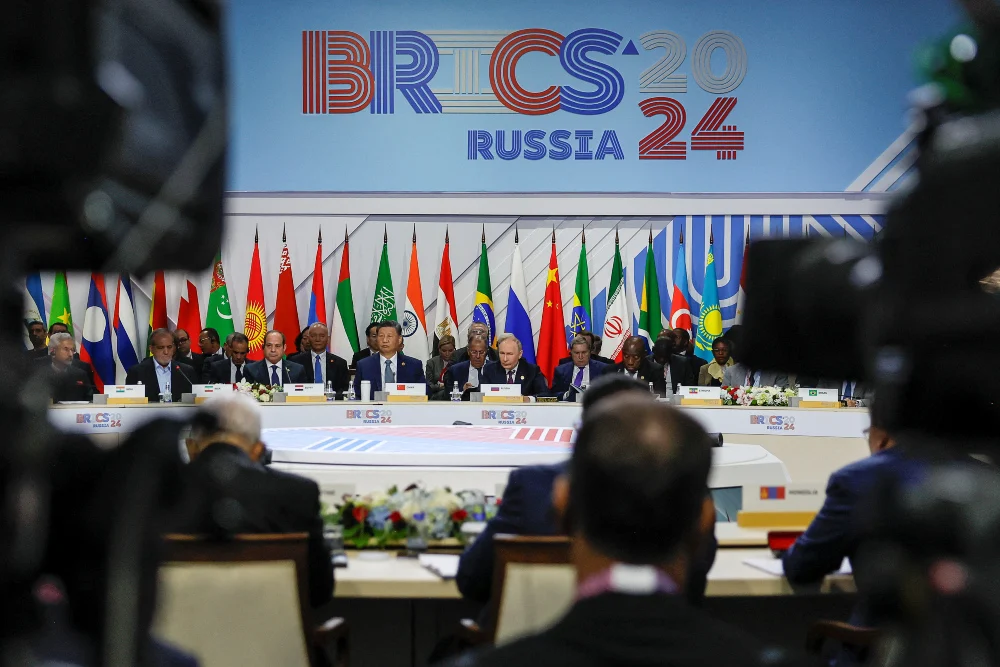
IndependentReport – In a bold move that has sent shockwaves through the global economy, President Donald Trump has threatened to impose a 150% tariff on imports from BRICS nations should they attempt to move away from the US dollar in international trade. The announcement, made on February 21, 2025, highlights the growing economic tensions between the United States and the BRICS bloc. Which consists of Brazil, Russia, India, China, and South Africa. This article delves into the implications of Trump’s tariff threat, the motivations behind the BRICS de-dollarization effort. And the potential global repercussions.
The BRICS nations have been actively exploring alternatives to the US dollar for years. Their de-dollarization strategy includes promoting local currency trade agreements. Creating a new BRICS-backed financial system, and reducing dependence on Western-dominated financial institutions.
Russia and China, in particular, have accelerated the use of ruble and yuan in bilateral trade to bypass US-imposed sanctions and currency fluctuations. Additionally, discussions about creating a BRICS digital currency have fueled concerns in Washington over the potential decline of the dollar’s dominance.
Trump’s tariff threat is seen as an aggressive attempt to maintain the global influence of the US dollar by economically penalizing nations that seek to diversify their monetary reserves. By implementing high tariffs, Trump aims to disincentivize further efforts by BRICS members to reduce their reliance on the dollar.
“Read More: World Seagrass Day 2025: Protecting Our Oceans”
If enacted, a 150% tariff would severely impact trade relations between the US and BRICS countries. Some key implications include:
Following Trump’s statement, several BRICS leaders have responded critically, calling the move an example of economic coercion. Russian government officials have warned that such an action could accelerate the push towards a multipolar financial system. Where the US dollar no longer holds the same level of dominance.
China, as the second-largest economy in the world, has already been leading initiatives to promote the yuan as a global trade currency. Brazil and India, while maintaining diplomatic ties with the US, have also begun increasing bilateral trade in local currencies to shield their economies from US-imposed economic fluctuations.
The BRICS bloc is expected to convene in the coming months to discuss countermeasures. Some potential responses include:
“Read More: Three Bus Explosions Near Tel Aviv: Rising Tensions and Military Response”
While Trump’s tariffs specifically target BRICS, the economic ripple effect could extend far beyond these nations.
Trump’s aggressive trade policies are part of a broader strategy to reinforce US economic influence and counter rising global economic competition. However, this approach carries significant risks, particularly if it accelerates the very trend it seeks to prevent the decline of the dollar’s global supremacy.
As the geopolitical and economic landscape continues to shift. The world watches closely to see how BRICS nations, US allies, and global markets respond. Will Trump’s tariff threat deter de-dollarization, or will it fuel a new era of economic alliances outside the traditional Western financial framework?
The coming months will be crucial in shaping the future of global trade, monetary policies, and economic diplomacy. One thing is certain: the balance of economic power is in flux, and how nations navigate these tensions will define the next chapter in international trade relations.